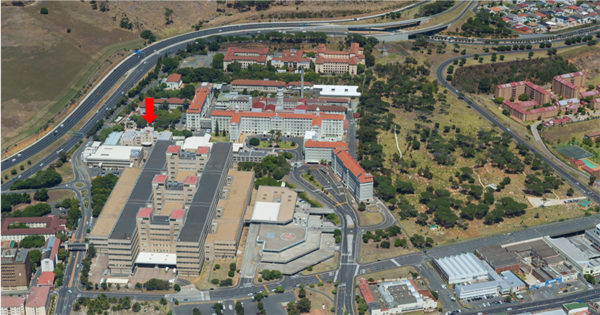A Neuroscience Centre, education building and student residence catering to 500 students are among the seven new buildings and developments planned for the University of Cape Town (UCT), which are expected to be completed over the next three years.
Director of UCT’s Capital Planning and Project unit, architecture and urban planner Nigel Haupt explains that the developments are a part of the university’s “master plan” that has been approved by the Department of Higher Education and Training.
“They are an important physical facet of UCT’s goal to remain Africa’s top university,” he said.
The new developments also include a Graduate School of Business Academic Conference Centre, the Africa Research Institute for Skin health (ARISE) hair and skin research centre, a school for design thinking and a reconfigured North Bus Stop.
Planned developments and schedules:
– The Neuroscience Centre, which will be located in the J-block at the Groote Schuur Hospital, is due for completion in September 2019
– The GSB Academic Conference Centre is due for completion in May 2019
– A new School of Education building is planned at a site that is adjacent to the School of Dance on lower Camus. It is expected to be fully operational by end of 2020
– A R100-million Hasso Plattner-funded D-school, which is near Woolsack on middle campus. The land is leased from UCT, meaning parts of the building will be devoted to other student facilities.
– A six-storey R73-million ARISE building, which is being funded by the Sector Education and Training Authority. It will function as a training centre for skin health and cosmetic and occupational product skin safety-testing. It is an addition to the health sciences campus, which will be shared with other UCT units.
– The North Bus Stop located on upper campus will be moved to a site opposite the Sports Centre to alleviate congestion in the area. It will include parking for buses and a 1 000-car space parking bay structure is planned in the near future.

New residence
With places for 500 students, the new Avenue Road residence will be for first-year students and located on middle campus. It is a first-tier residence and includes dining as well as other facilities. The building is aimed to be completed in 2020/2021 and will be the last student housing facility built on UCT property.
Haupt says student accommodation has been a growing challenge for UCT but that the unit aims to provide one-third of UCT’s students a form of housing.
“We have around 6 700 beds now. Our aim is to provide 10 600 beds.”
Keeping to a standard of excellence, Haupt says the construction adheres to traditional building methodology, which reduces maintenance costs.
“We build to a four-star rating on all new builds. Our residences have lifts to provide access for all, heat pumps to reduce our carbon footprint, greywater systems infrastructure, and this residence includes a 550-seater dining hall for first years. It will also serve other residences in the vicinity that do not have dining facilities.”
Private student apartments can be expensive, and UCT offers student accommodation for lower prices than the market rate. UCT is looking into leases with private developers to cater to the high need for affordable student housing.
“This costs students one-third less than the private sector charges as we can negotiate favourable rates, without a major capital outlay. It’s attractive to developers to have a secured tenancy of students for 10 months of the year over an extended 5-, 10- and 15-year period. So, we leverage off demand with private developers without any new build for UCT.”
Other requirements for residences include that they be within 500m walking-distance from a Jammie Shuttle stop, that first-tier residences include a dining facility and that self-catering facilities be within 200m walking-distance from a grocer.
Aiming to cater to 32 000 students overall, several sites for new residences have already been identified.
Infill opportunities
Using “infill opportunities” instead of purchasing new land or properties, UCT will construct new buildings between existing ones on all campuses, including the Rosebank and Mowbray residence precincts and the health sciences campus.
UCT wants to commit to repurposing and refurbishing existing buildings, rather than constructing new builds.
“The Chris Hani redevelopment in the old New Science Lecture Theatre is a good example of how an existing facility can be repurposed to make it more efficient,” says Haupt.
Satellite campuses
According to the university, its physical footprint is “bound” by a council-ratified sizes-and-shape document which takes into consideration UCT’s geographical position between the mountain and the sea.
“Accordingly, the maximum head-count will be between 30 000 to 32 000 students. The shape and size plan also aims for a 60/40 split between undergraduate and postgraduate students.”
Haupt says that the current “rumours” of possible UCT satellite campuses are not part of the plan and this means that UCT will have to expand within the “corridor” of Main Road between the Faculty of Health Sciences in Observatory to Rondebosch, and the Old Zoo boundary above the M3.
Picture: University of Cape Town, A visual of the Neuroscience J-Block being built at Groote Schuur Hospital.

